Paul woz here
Corinth, Greece
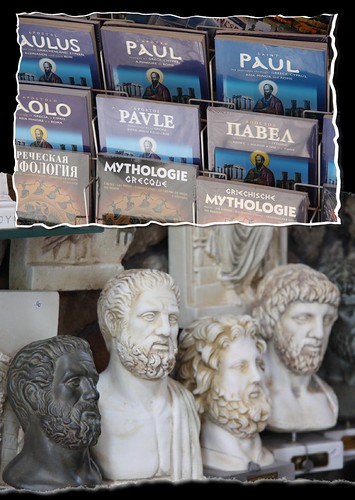
That the Bible is merely a myth or a collection of stories is a fallacy dispelled when you walk the streets of Ancient Corinth. Here the writings, given the due they deserve, are accepted as historical fact along with other ancient manuscripts.
“Paul left Athens and went to Corinth. There he met a Jew called Aquila, a native of Pontus, who had recently come from Italy with his wife Priscilla, because Claudius had ordered all Jews to leave Rome. Paul went to see them, and because he was a tentmaker as they were, he stayed and worked with them.”
The exile is a readily accepted fact, documented in places other than the Bile that so often is viewed with suspicion. It is also known that the Roman Corinth, rebuilt under Julius Caesar in 44BC (having been destroyed by the Romans a century earlier) was mainly filled with Jews and freed slaves. The Biblical account stacks up.

Despite being here after the heat of high summer, the temperature is still in excess of thirty degrees. You can see how tentmakers could eek out a living here; even today you could support yourself sewing canvas. Outside the cafes are expansive umbrellas. Hanging above every shopfront is shade-providing awning. It is not difficult to imagine awnings protruding from the rows of shops in the excavated archaeological site. You can almost hear the sheep and goats bleating, chickens squawking. You can almost smell the fresh catch from the sea brought up the hill to be sold. You can visualise urn-carrying women taking shelter under the trees as they chat on their way to the fountain.
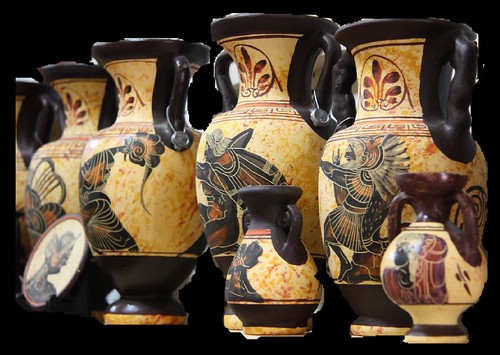

Why would we doubt the Scriptures when it is so easy to see their reality?
We stand right at the spot where Paul was brought before Gallio.
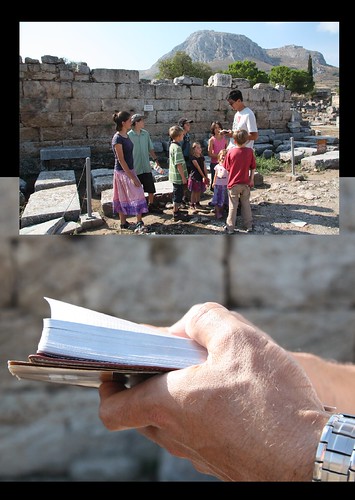
We read:
“While Gallio was proconsul of Achaia, the Jews of Corinth made a united attack on Paul.”
We imagine Gallio at the top of the steps, Paul perhaps at the bottom, surrounded by the crowd. We wonder if anyone looked up to the Acrocorinth. We wonder how much of Aphrodite’s temple remained back then.
“Just as Paul was about to speak, Gallio [spoke to the crowd] and drove them off.”
Did they go up towards the Temple of Apollo? Built in 550BC, it was still functioning when Paul was there around the AD50s, but was later destroyed by earthquake – only seven of the Doric columns remain, the sole reminder of one of the oldest temples in Greece.
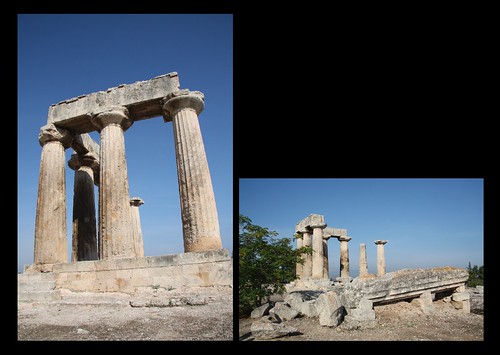
Or did they head north past what is now known as Temple E, The Temple to Octavio?
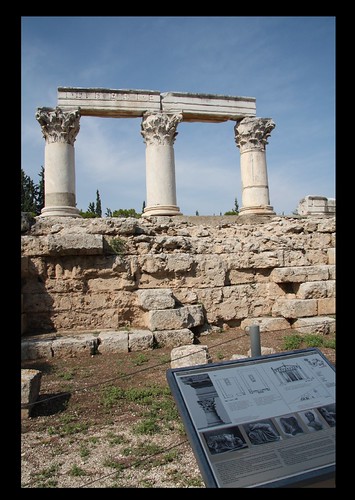
Or did they storm down the main street past the Fount of Peirene?
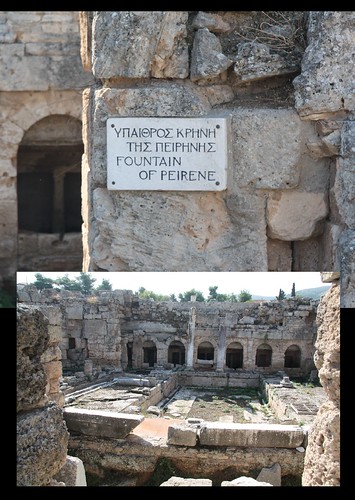
Here’s where historical fact blends into legend. Was the fountain made when Pegasos stomped his hoof upon being bridled by Bolerothon? Or did it appear when, distraught at her son’s death, Peirene dissolved into tears?
Contemplating the options along with the four large reservoirs that stored the water, the columned colonnade, the chapel and cemetery that stood atop the spring in later centuries, we leave the blazing sun and take refuge in the cool of the museum. Artefacts discovered in the course of excavation are on display, the oldest we find dating back to 900BC. It’s a pot, intricate, well made, finely painted and incredibly well preserved. We ooh and aah and are wowed, but the hordes of tourists who have arrived prevent us from getting a good long look in the cabinets. Because we’ve allowed ourselves a whole day at this site, we can retreat to the vans for lunch and reading before returning to the site, journals in hand, later on when the crowds have been zapped away in flash busses to Athens.
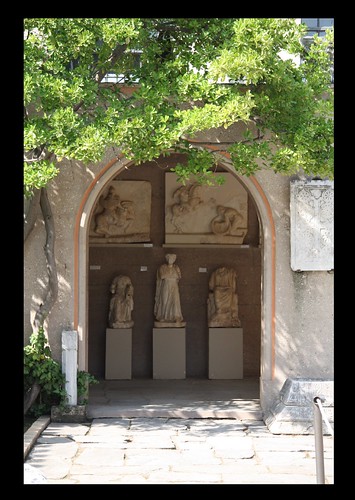
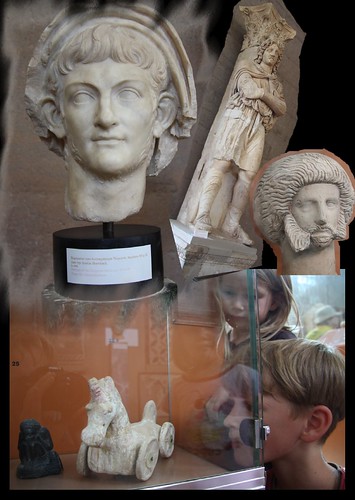


wandering around the town away from the tourist spots,
we find a four-language inscription of part of the letter Paul wrote to the church here
Tags: 2008/09, God, history, postcard: Greece, weather




That was wonderful. Thanks for taking us all with you. So, what was for dinner? 🙂